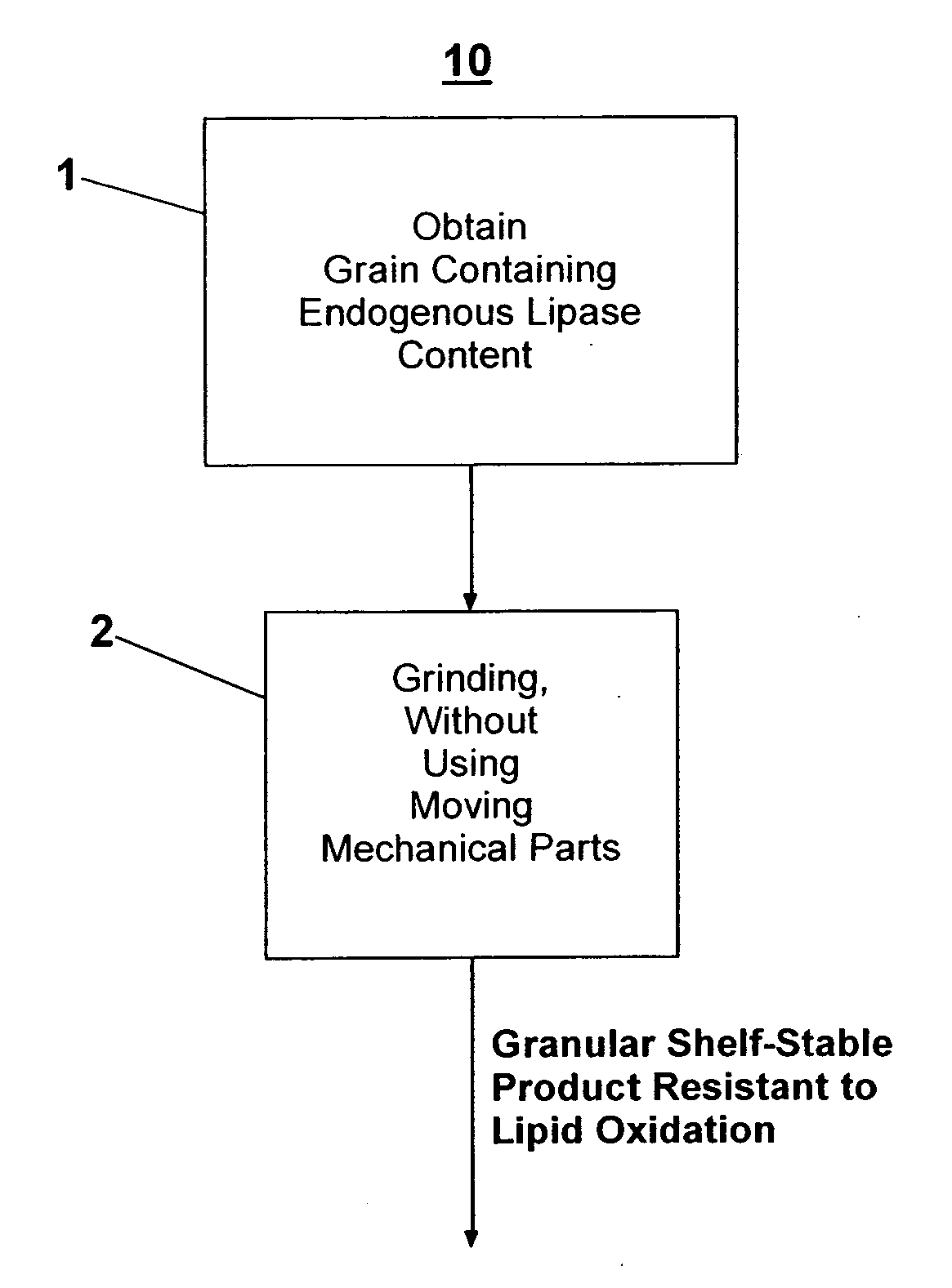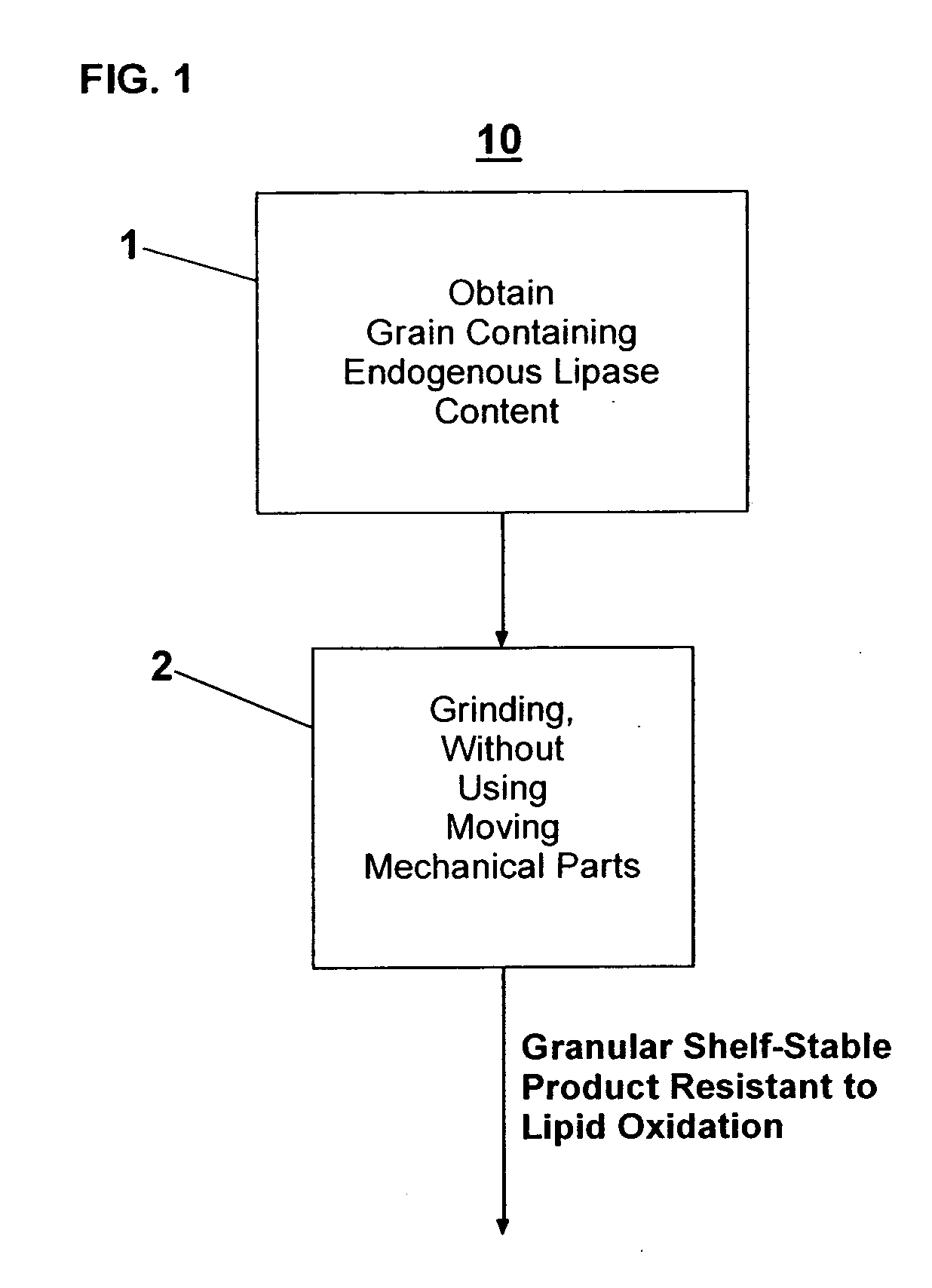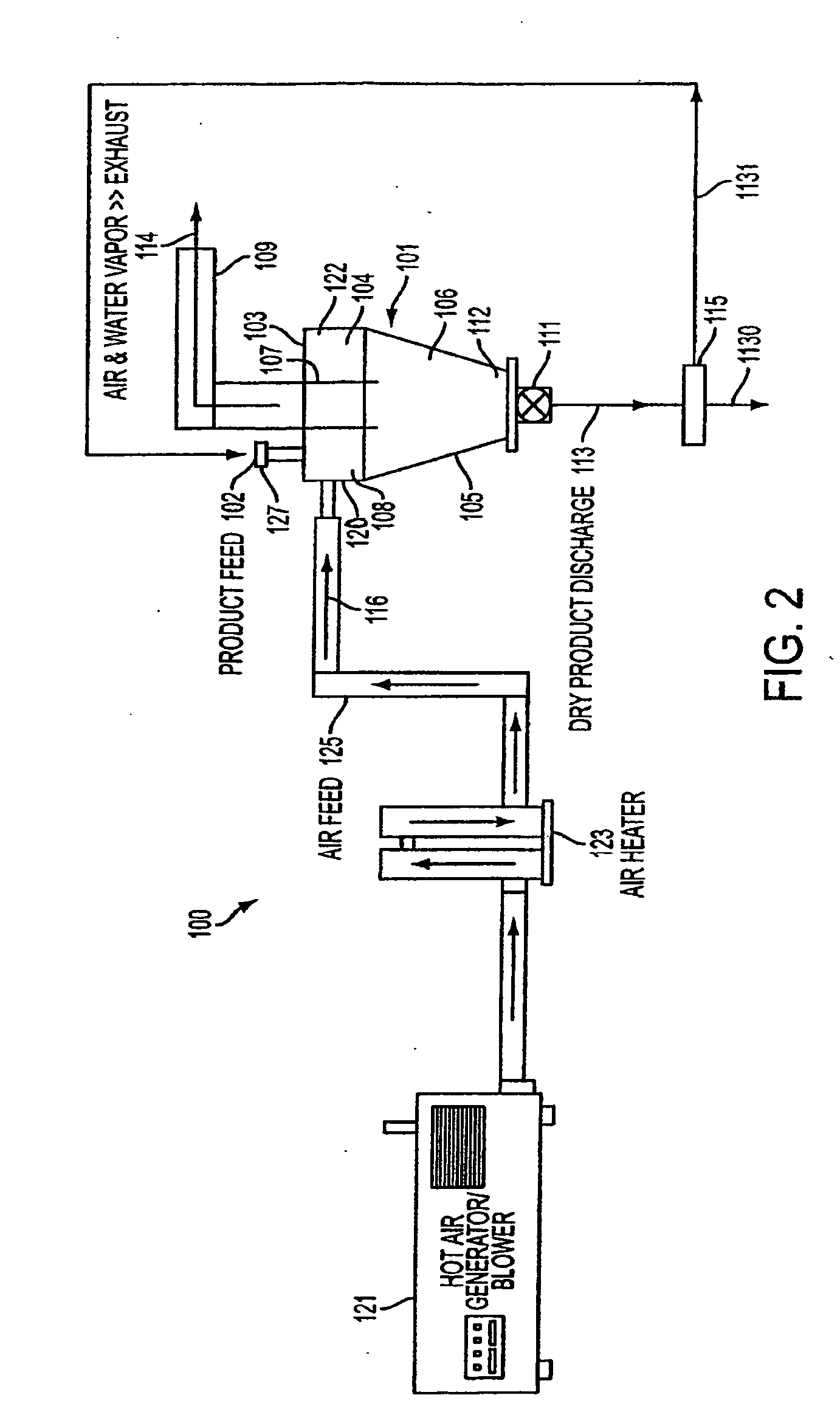Process for granulation of edible seeds
a technology of edible seeds and granulation, which is applied in the field of grinding edible seeds, can solve the problems that grain products such as flour may not be economically and/or functionally useful, and achieve the effects of stable and resistant to lipid oxidation, less prone to lipid oxidation, and more stabl
- Summary
- Abstract
- Description
- Claims
- Application Information
AI Technical Summary
Benefits of technology
Problems solved by technology
Method used
Image
Examples
example 1
[0072] Dry whole corn (Commodity USDA #2 yellow dent whole corn, Cargill) was fed into a WINDHEXE apparatus for circular vortex air-flow material grinding. The WINDHEXE apparatus was manufactured by Vortex Dehydration Systems, LLC, Hanover, Md., U.S.A. The basic configuration of that type of apparatus is described in U.S. patent application publication no. 2002 / 0027173 A1, and reference is made thereto. The process unit had four inlet ports equidistantly spaced around the upper portion of the apparatus through which the compressed air stream was concurrently introduced in a counter-clockwise direction.
[0073] A two-foot diameter WINDHEXE apparatus was used. The diameter size refers to the chamber size of the enclosure into which air and grain introductions were made. The conditions of this experiment are described below. The feed rate of the low-moisture crackers was set for an approximate discharge of 3 pounds solid product per minute, and approximately 20 pounds of food material w...
example 2
[0077] Ground whole grain stability was investigated for various grains processed at different process air temperatures in the WINDHEXE apparatus. The various grains were each processed in a WINDHEXE apparatus of similar equipment configuration and processing conditions as described in Example 1. The ground products were then stored for 4 weeks at ambient conditions. After 4 weeks of storage at ambient conditions, all samples were sensorily evaluated by experienced evaluators for taste and aroma and found to be acceptable for use as a food preparation ingredient. The test results are set forth in Table 1 below.
TABLE 1Whole GrainProcess Temp.Hexanal (ppm)Taste / AromaCornAmbient2.52AcceptableCorn250 F.0.33AcceptableRiceAmbient0.40AcceptableRice250 F.0.72AcceptableBarley250 F.1.16AcceptableRye250 F.0.18Acceptable
[0078] By comparison, ground whole grains prepared on a conventional piece of equipment with mechanical moving parts contacting the grain during milling, such as a hammer mill...
example 3
[0079] Several whole grains were processed in a WINDHEXE apparatus under conditions similar to those described in Example 1, with no moving parts, and for comparison separate samples of the same types of grains were via conventional roller technology. In this regard, red soft whole wheat (RSWW) and white soft whole wheat (WSWW) were milled via a conventional milling process comprising milling untempered whole grains using conventional corrugated milling rolls, which were compared separate samples of the RSWW and WSWW which were subjected to processing in the WINDHEXE apparatus with feed air pre-heated to 250° F. Lipoxygenase activities of these samples were measured and compared. Lipoxygenase activity was measured using the method of Hamberg et al. using linoleic acid as the substrate. Hamberg, M., et al., (1967) J. Biol. Chem. 242, 5329. As shown in FIG. 6, the “WSWW 250F” sample prepared according to an embodiment of the present invention had about 60% decrease in lipoxygenase act...
PUM
 Login to View More
Login to View More Abstract
Description
Claims
Application Information
 Login to View More
Login to View More - R&D
- Intellectual Property
- Life Sciences
- Materials
- Tech Scout
- Unparalleled Data Quality
- Higher Quality Content
- 60% Fewer Hallucinations
Browse by: Latest US Patents, China's latest patents, Technical Efficacy Thesaurus, Application Domain, Technology Topic, Popular Technical Reports.
© 2025 PatSnap. All rights reserved.Legal|Privacy policy|Modern Slavery Act Transparency Statement|Sitemap|About US| Contact US: help@patsnap.com



